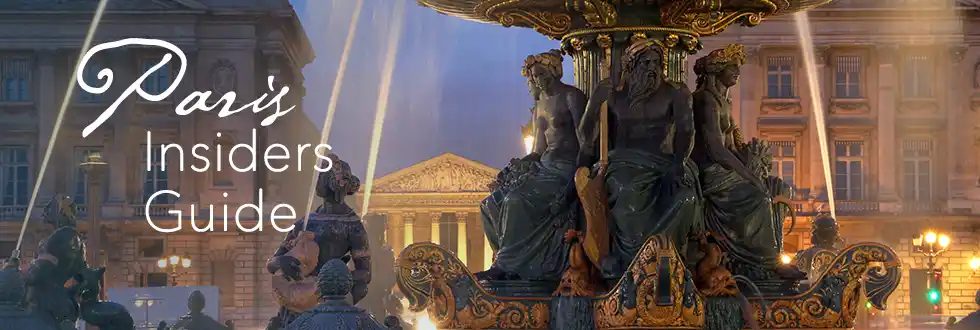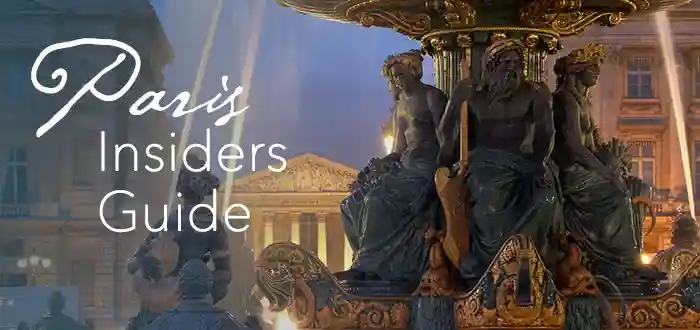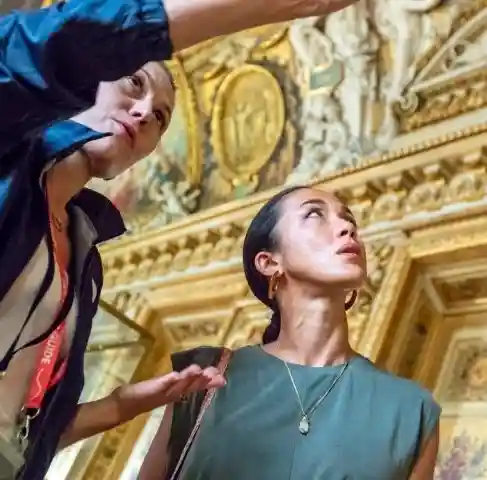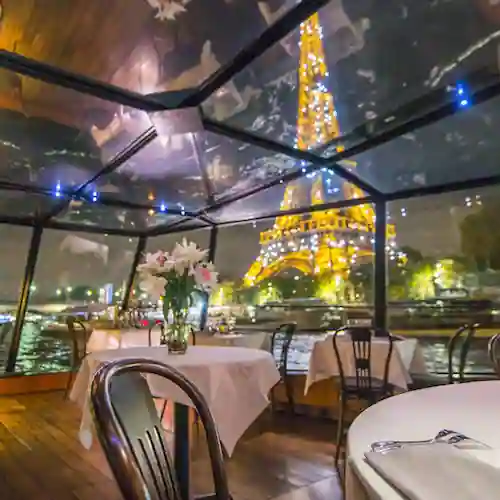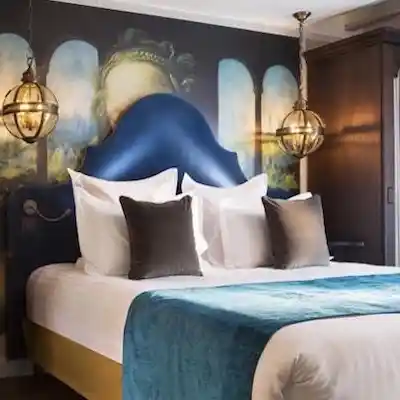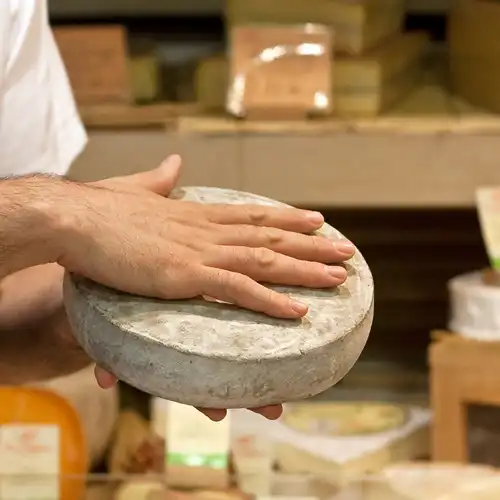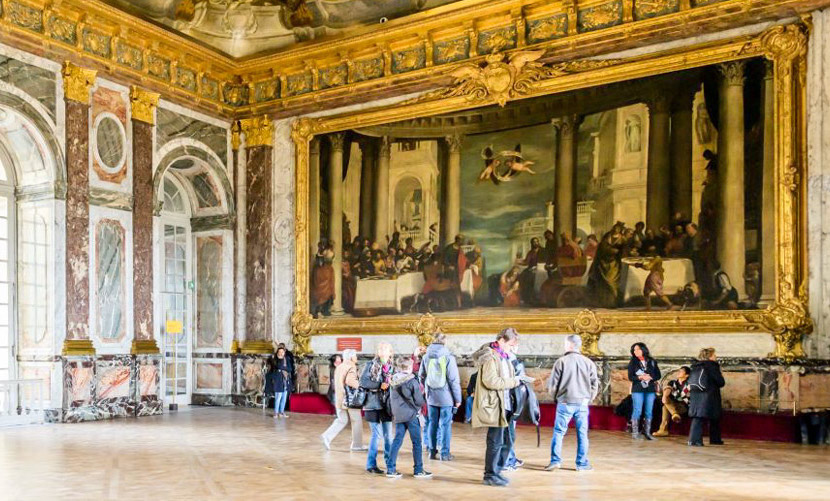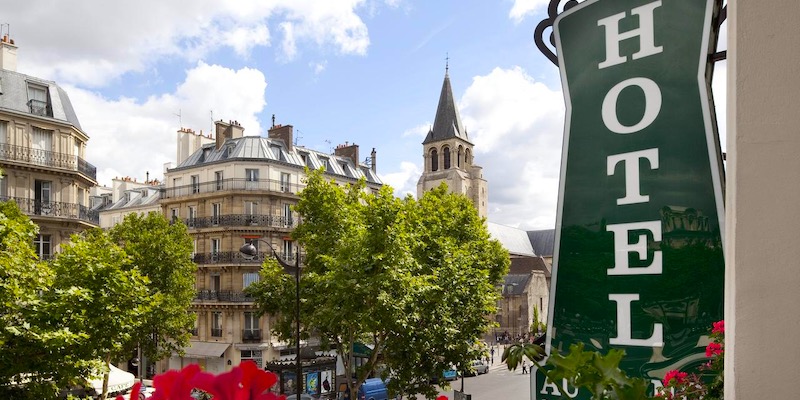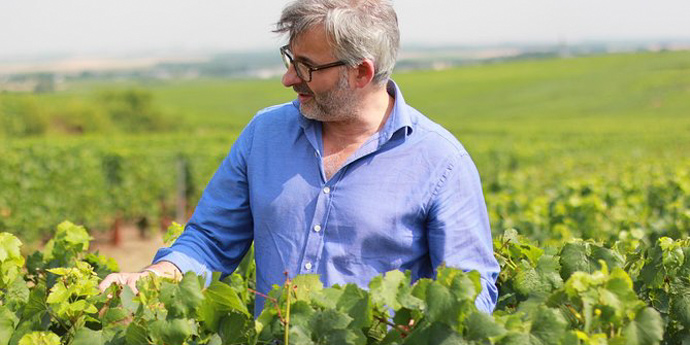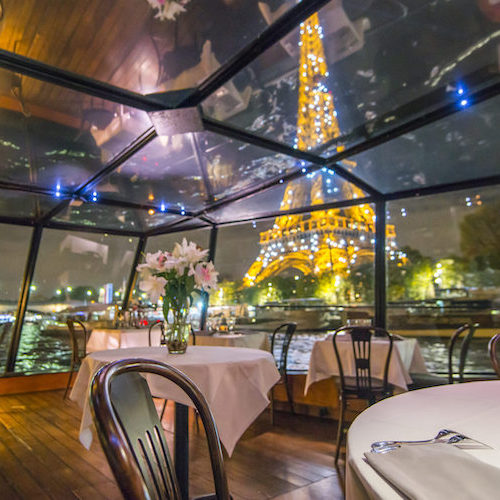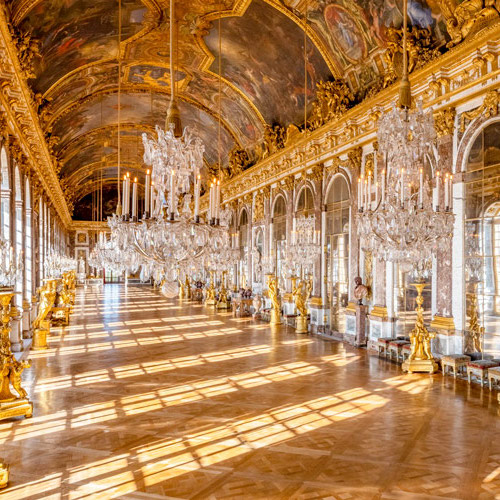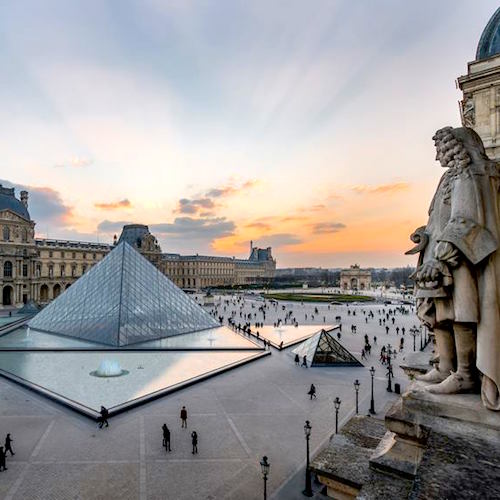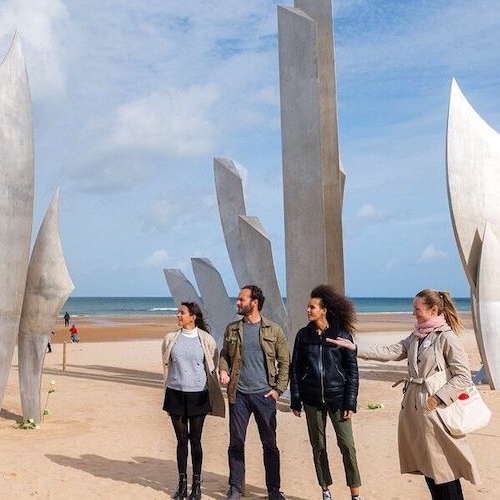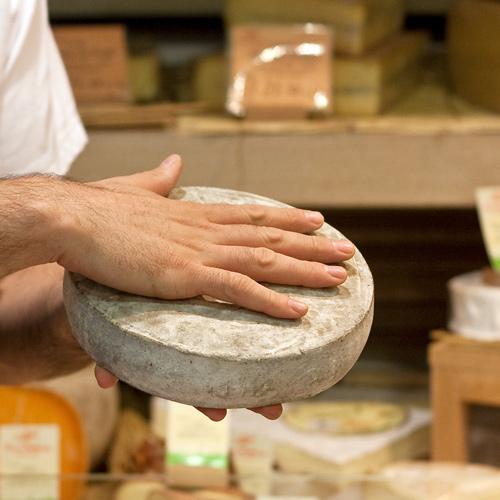Parc de Belleville – 11 Acres of Green Space in the 20th Arrondissement
It's certainly not in the center of Classic Paris, and you don't really have to travel out to the 20th Arrondissement to find a pleasing Parisian park, but if you want a place for the kids to have fun while you take in a magnificent view of the Paris skyline, Parc de Belleville is worth a Metro journey.
![]()
Our Top-Rated Paris Experiences
Sweeping Views of Paris
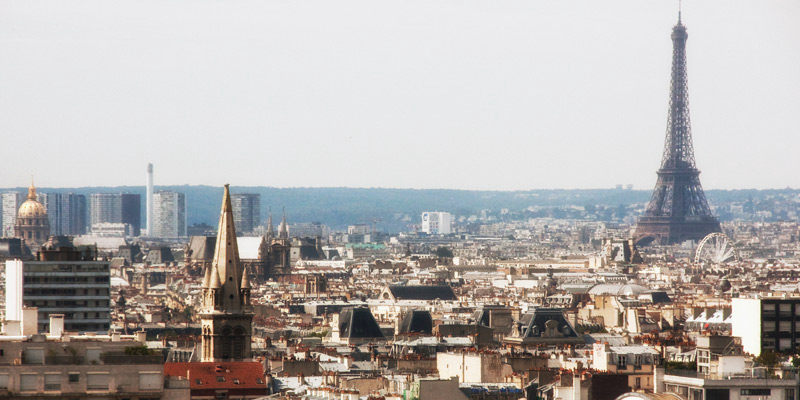 Napoleon's tomb, the Concorde Ferris Wheel, and the Eiffel Tower from Parc de Belleville, photo by Mark Craft
Napoleon's tomb, the Concorde Ferris Wheel, and the Eiffel Tower from Parc de Belleville, photo by Mark Craft
Parc de Belleville is the highest park (above sea level) in Paris and takes advantage of that fact with one of the bests views of the Paris skyline. It's also the highest park from top to bottom (at about 30 metres), providing the opportunity for the longest cascade (waterfall) as well as the longest children's slide in Paris. Let's take it from the top.
![]()
Discover What's On When You're Here...
• January... |
• February... |
• March... |
• April... |
• May... |
• June... |
• July... |
• August... |
• September... |
• October... |
• November... |
• December... |
Discover What's On When You're Here
• January...
|
• February... |
• March... |
|---|---|---|
• April... |
• May... |
• June... |
• July... |
• August... |
• September... |
• October... |
• November... |
• December... |
The Belvédère & the Fontaine
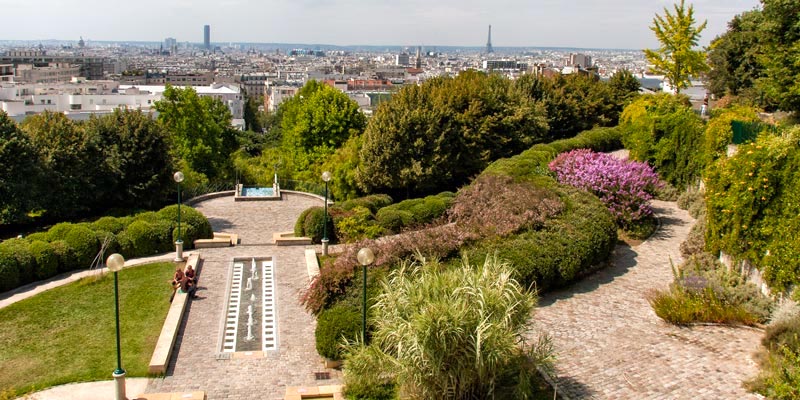 The view of Paris from the Belleville Belvédère, photo by Mark Craft
The view of Paris from the Belleville Belvédère, photo by Mark Craft
Here at the highest point of Parc de Belleville is the Belvédère, a pavilion decorated with street art that looks over the rest of Paris. The Eiffel Tower and Tour Montparnasse, those two man-made peaks, are easy to spot, but you can also identify the dome of Napoleon's Tomb and the Ferris wheel on Place de la Concorde.
Below you the Fontaine de Belleville runs downhill is a series of cascades — around burbling fountains, alongside leafy paths, down slopes, to end up in a curved pond at the bottom of the park.
Parc de Belleville Layout & Design
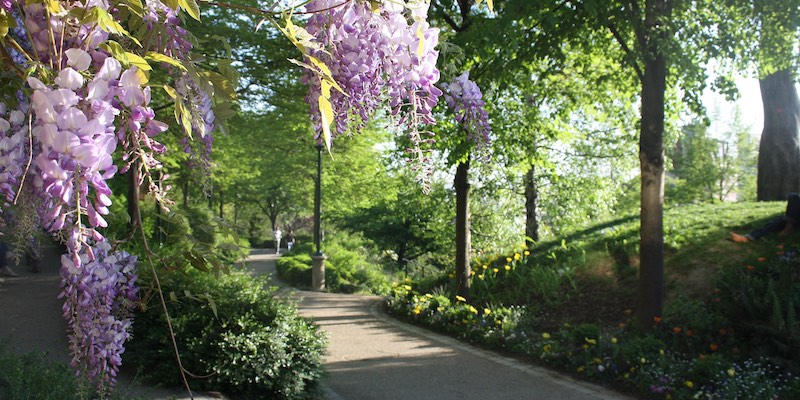 Pathway at Parc de Belleville, photo Wikimedia by parissharing
Pathway at Parc de Belleville, photo Wikimedia by parissharing
The park was built in the same late-20th-century period as the postmodern Parc André Citroën — one park located at the southwestern edge of Paris in the 15th Arrondissement, the other, Belleville, diagonally opposite in the 20th Arrondissement. Both parks are a break from the classic French garden design seen at Luxembourg or the Tuileries with their arrow-straight pathways and trees planted in geometric shapes. (Not that we don't like that style.)
At Belleville the pathways are tiered down the hill, curved and running parallel to each other, connected by a central staircase. The paths are lined with trees and flowering paths and benches dot the way. A attractive feature at Belleville is the 1,000 square metres of lawn, where you are allowed to sit, picnic and sunbathe, unlike most of the grassy areas at the Tuileries and Luxembourg.
![]()
The Best Evenings in Paris
|
Dinner & Cabaret at the Moulin Rouge |
VIP Dinner Cruise with Bateaux Parisiens |
|
Dinner & Cabaret at the Moulin Rouge |
It's for Kids & Families, Too
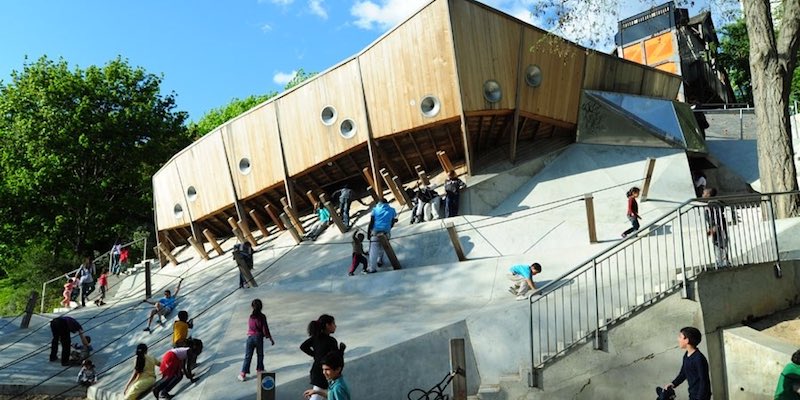 The quirky, topsy-turvy playground at Belleville
The quirky, topsy-turvy playground at Belleville
The lawn is a wonderful place for children to run around while you take in some sun or read a book. The waterway is endlessly fascinating for kids as well. But the best feature for them is the wooden playground that runs down the hill. There are gently-sloped climbing walls, portholes, stairs and, as we mentioned, the longest slide in Paris.
![]()
|
From Paris to Provence, Burgundy to Bordeaux, find hotel deals with current sale prices. Save up to 20% in cities, villages, beach towns, and storybook countryside escapes. |
|
Discover today's sale prices on hotel rooms in every village & city in France. Save up to 20%. Find hotels in Paris, Burgundy, Provence, the Loire Valley, Normandy, and everywhere else! |
Parc de Belleville History
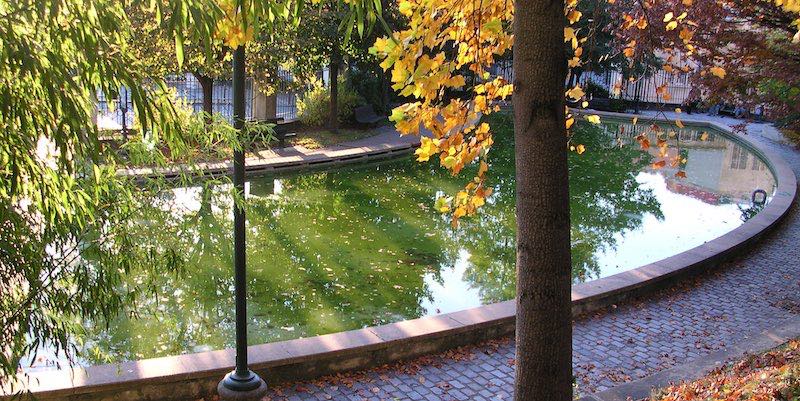 Tranquil pond at Parc de Belleville, photo Wikimedia by Romary
Tranquil pond at Parc de Belleville, photo Wikimedia by Romary
Belleville, as a district, wasn't incorporated into Paris until 1860, during the Haussmannian renovation and expansion of Paris. Before that it was a wine-growing village on a hill outside the city. In the Middle Ages monasteries planted vineyards on the hill to take advantage of the slope and the naturally-occurring springs.
Being outside of the Paris walls — the "tax-walls" as they were called — meant that cheap taverns, restaurants, and dancehalls sprung up here and the area became synonymous with these rowdy activities. In the 19th century a big Mardi Gras festival took place every year on the hill, and legendary drinking sessions closed out the festivities. By the mid-to-late 19th century most of the hillside vineyards were ripped out to allow for the mining of the limestone used in building the new Paris.
Belleville became the winter home of thousands of workers from other parts of France (many of them from Limoges), who worked on the Haussmann construction or mined the limestone, but returned home in the summer months to work the land. Living conditions were insalubrious and did not improve when the rebuilding of Paris was finished and there was no more work for these migrants.
In the 1980s, the slums clinging on to the Belleville hill were razed and the new park was built. The Mairie de Paris described Parc de Belleville as "one of the most beautiful achievements of the City of Paris of the last 20 years, in a neighborhood that was particularly lacking green spaces." Today the park is home to more that 1,200 trees, annual & perennial flowers, and flocks of birds who have now made Belleville home.
![]()
|
Escape to the Land of Bubbly on a small-group day tour from Paris. Taste at top Champagne houses, meet boutique producers, enjoy a leisurely lunch, and toast to a perfectly sparkling day. |
|
Escape to the Land of Bubbly on a small-group day tour from Paris. Taste at top Champagne houses, meet boutique producers, enjoy a leisurely lunch, and toast to a perfectly sparkling day. |
Parc de Belleville Resources
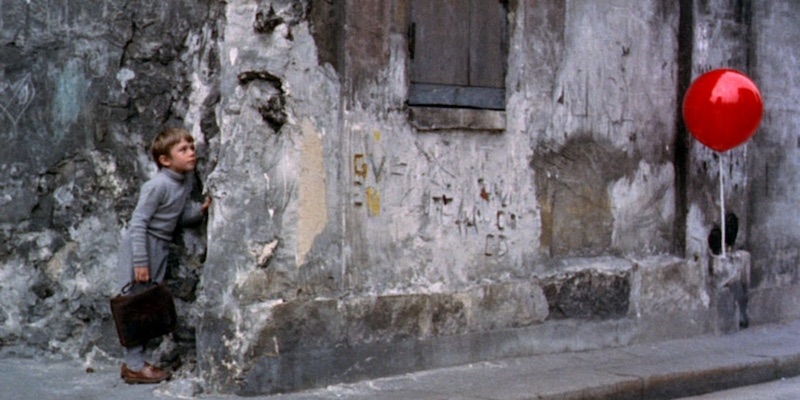 Scene from The Red Balloon
Scene from The Red Balloon
- 45,000 square metres (11 acres) of parkland
- 1,000 square metres of lawn
- A small heritage vineyard with 140 vines
- Much of the classic film, The Red Balloon, was shot on Rue Vilin, which was razed to create Parc de Belleville.
- Lower Entrance – 47 Rue des Couronnes, 75020 Paris, France
- Upper Entrance & Belvédère – 27 Rue Piat
- 20th Arrondissement
- Metro – Couronnes (lower), Pyrénées (upper)
- Opens 8:00 AM weekdays, 9:00 AM weekends
- Closes 8:30 PM, 9:30 PM summer, 7:30 PM winter
Paris Planning Guides
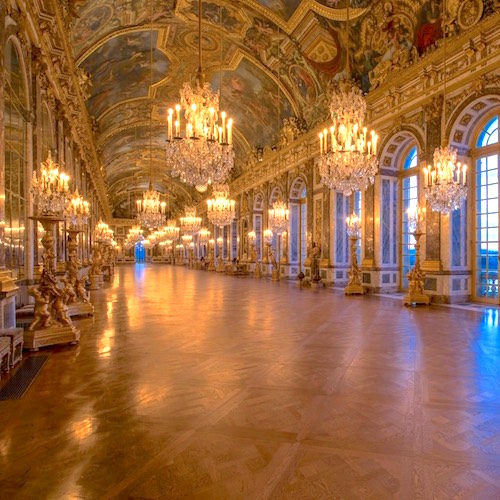 Visiting Versailles
Visiting Versailles |
 Book an Airport Transfer
Book an Airport Transfer |
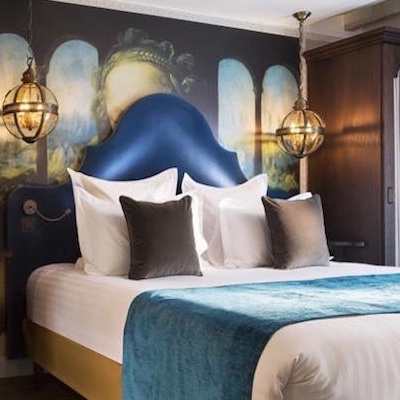 Left Bank Hotels
Left Bank Hotels |
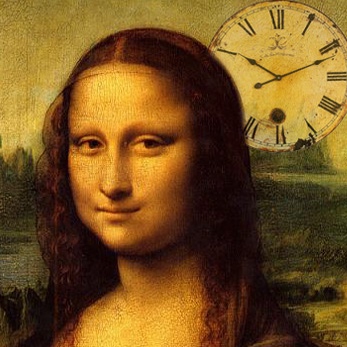 Skip the Museum Lines
Skip the Museum Lines |
